Bee Hotels are NOT the Answer
A lazy-man's response to biodiversity loss, studies show bee hotels may do more harm than good
Emerging studies indicate bee hotels are not the answer to declining populations of beneficial insects that we’d hoped for, and may actually do more harm than good. Frequently seen in garden centers and home-improvement stores, bee hotels are cute and aesthetically pleasing, motivating the well-intentioned buyer into adopting the concept. Yet, folks should consider carefully before setting one up at home.
Have you ever stood beneath a flowering fruit tree in springtime to listen to and observe the many pollinating insects flitting from one blossom to the next? Have you chanced upon a lush meadow or garden teeming with beneficial insects and did you perhaps stop to watch the goings-ons? Have you ever paused to regard insects at all?
Maybe it’s only myself who is awed and entranced by insects, lol. Watching the myriad bees, wasps, flies, beetles and butterflies at work in the landscape is profound and magical. To watch a dance that has been performed by plants and insects every year for a millenia moves me. When you look upon the act of pollination, it’s almost as though you’re looking back through time. I can see the history of the world unfold before me, and I feel small and my life insignificant in comparison.
As a child, I was like most people─fearful of “bugs”. Over the course of my life, however, they’ve changed me somehow. Once I began keeping bees some 14 years ago, I became consumed by “bee-fever”. I studied them obsessively, became president of my local beekeeper’s group and taught about bees all over Central Maine.
Gaining a new appreciation for insects, I realized all of my environmental aspirations could be distilled into these tiny creatures─these keystone species. Insects, fungi and soil microbials are the foundation of every ecosystem and the key to diversity on Earth. That’s why the mission of the Runamuk Acres Conservation Farm is to protect wildlife through the conservation of beneficial insects and soil microbial life. My goal is to provide an ecological and financial benefit for the entire community, and the community includes the soil, water, fauna and flora, as well as the people.
More Harm Than Good
Building a bee hotel had long been on my list of projects for Runamuk Acres. However, it only dawned on me recently that I could make bee hotels for other people’s backyards—further promoting the conservation of native beneficial insects. Super stoked by the concept, I began researching designs and requirements, but I was surprised and dismayed by the information I found….
The majority of units available on the market are a capitalist’s response to the “save the bees” movement. They’re cute and aesthetically pleasing, enticing buyers who believe they are helping the environment. Unfortunately, most of these bee hotels are woefully inadequate for their target species and offer no instruction on installation or maintenance. Rather than being a help, there is increasing evidence that bee hotels may be doing more harm than good.
Gaining a new appreciation for insects, I realized all of my environmental aspirations could be distilled into these tiny creatures─these keystone species. Insects, fungi and soil microbials are the foundation of every ecosystem and the key to diversity on Earth. That’s why the mission of the Runamuk Acres Conservation Farm is to protect wildlife through the conservation of beneficial insects and soil microbial life.
Parasitism
Rosita Moenen observed that an increasing number of badly-designed artificial nesting sites contributed to higher loss of (solitary) bees by parasitism.[1] Unmanaged insect hotels allow the spread of parasites and mold, reducing population numbers of bees and introducing disease.
Parasitism happens when kleptoparasites lay their eggs in tubes or cells occupied by bee larvae. Their larvae will hatch, consume the stored pollen and kill the bee larvae inside. Examples are parasitic wasps Melittobia acasta and Coelopencyrtus sp., and parasitic fly (Cacoxenus indigator) that attack red mason bees.[2] Insect hotels (especially large ones) make it very susceptible to parasitism.
Wasp Hotels?
Researcher Scott MacIvor discovered that native bees weren’t the only residents of the 200 bee hotels he set up across Toronto from 2011-2013. [3]
“There are a lot of different insects and animals that use dark and dry holes to make a nest, including native bees,” McIvor says. “We wanted to discover who was using these bee hotels through our study.”
At the end of the season, McIvor collected these boxes and inspected the contents. What he found was surprising:
50% of the bee hotel occupants were wasps
25% were non-native or introduced bees
Only 25% were native bees
Other occupants included spiders, birds and even a mouse.
McIvor found a lot of wasps living in the hotels.
Did you know???
Wasps get a bad rap because they’re very defensive of their nests, but did you know they are beneficial insects, too? Wasps eat insect-pests such as aphids, caterpillars, inch worms, and beetle grubs, taking them back to feed their babies, while the adults drink nectar, thus pollinating flowers at the same time.
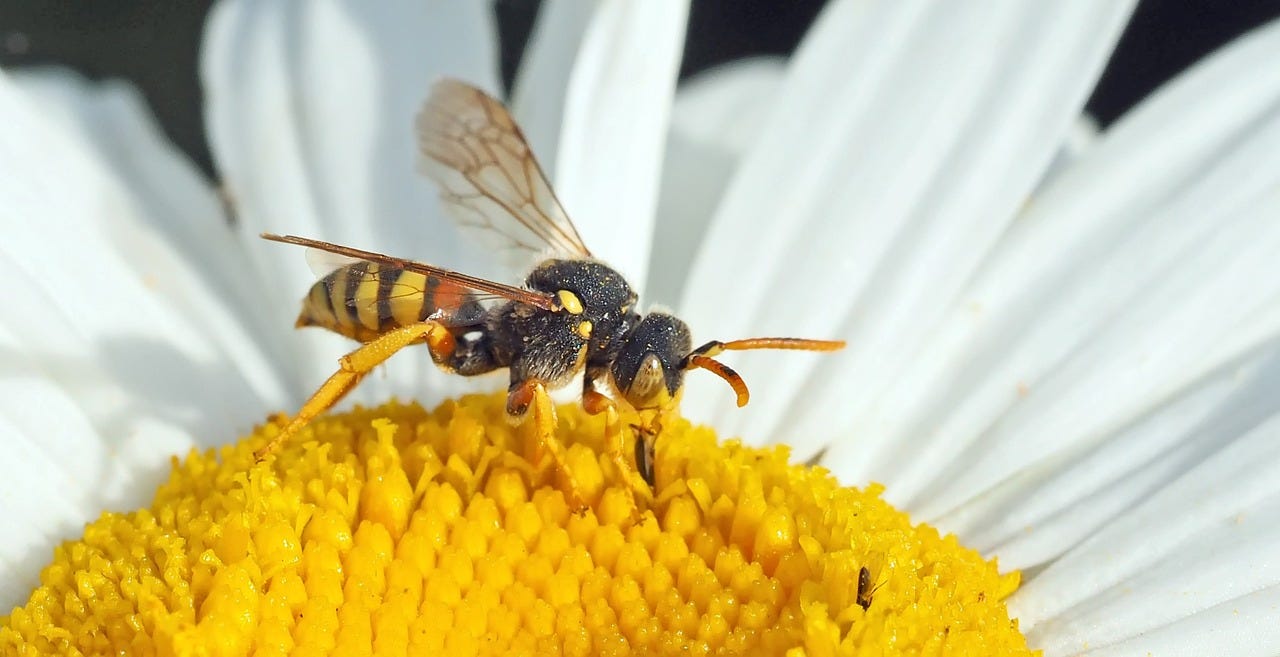
Aggressive Invasives
Insect hotels also offer an advantage to more aggressive invasive species:
Researchers analyzed 71 insect hotels in twelve parks in Marseille, on the Mediterranean coast of France. They then analyzed how many species and how many individuals of each hatched in the following year. The results are worrisome: from the 889 individuals that hatched, 356 were the Giant Resin Bee. That’s 40%, the majority. The second-most abundant species was the Red Mason Bee (Osmia bicornis, 34%), followed by O. cornuta (16%), O. niveata (7%) and O. caerulescens (2%). All mason bees, all native, but not typical Mediterranean species, and except O. niveata none of them endangered.
In addition, the invasive and the native species co-existed only in ten of the bee hotels. Geslin and his co-authors found that the more the invasive species was present, the less likely it was the native species could hatch. [4]
Predators
In addition to parasitism, disease and competition from other species, bee hotels also serve as an all-you-can-eat buffet for predators. Many birds, frogs, skunks, and bears will gladly take a free meal and can decimate bee populations.
Not a Complete Write-Off
Despite their disadvantages, the bee hotel concept is not a complete write-off. Insect hotels have long been popular in Germany, where forests are highly managed, leaving few suitable nesting sites for wood-nesting bees and wasps. When it became apparent that insect populations were declining─instead of restoring habitat─farm stewards provided “hotels”. They used drilled wooden blocks and hollow twigs to create man-made habitats and this works for them because they actively manage the facilities for their “guests”.
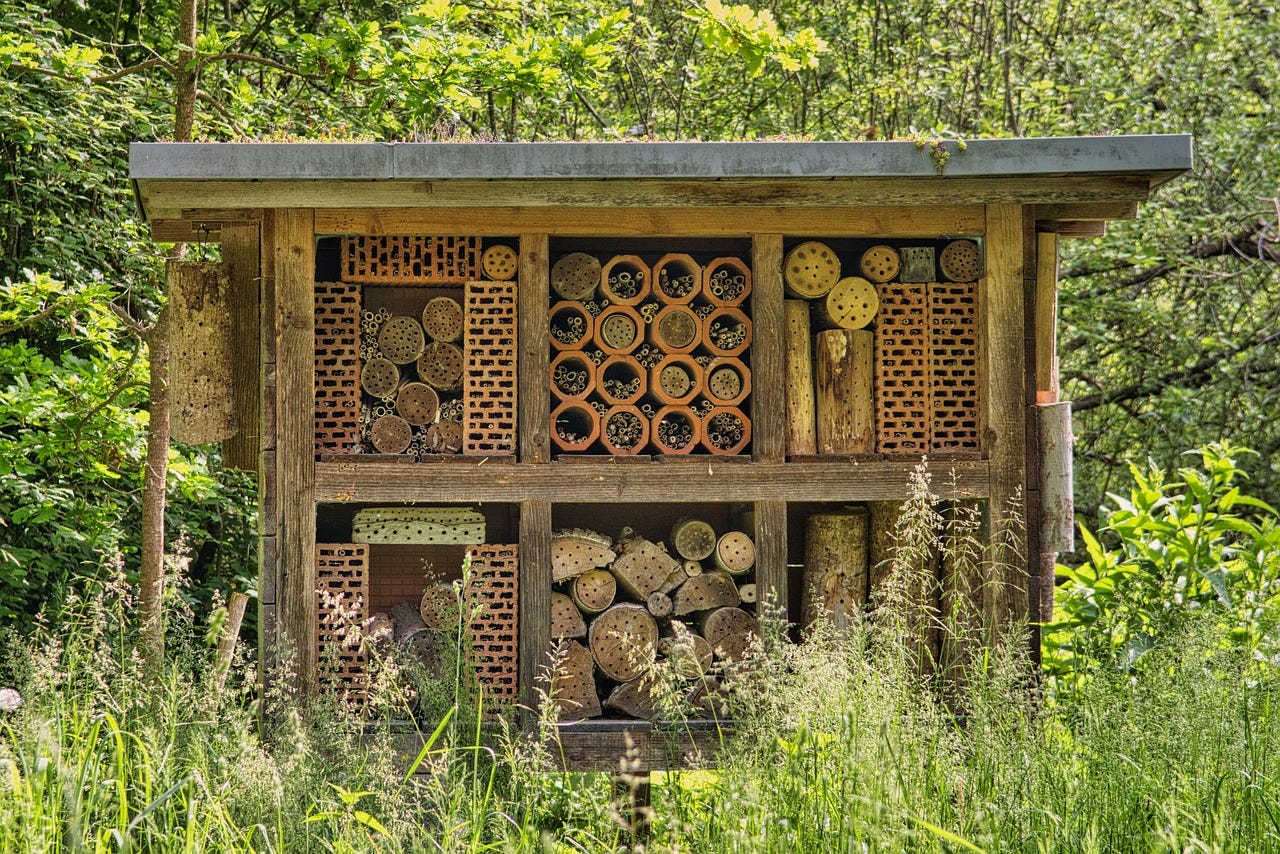
Bee hotels should be looked at like bringing home any other new pet—a commitment the new owner is taking on. Anyone adopting the bee-hotel concept is responsible to practice due diligence to ensure these structures are designed and managed so as to minimize their negative effects. The key is in choosing the correct structural design and in providing a nurturing environment that includes annual maintenance.
With care and attention, these hotels can be used to open the door to conversations about insects. They increase awareness of their existence and the role insects play in the world around us. Insect hotels help us overcome our fear of bugs so that we can learn more about them, leading to a greater capacity to tolerate insects on a broader scale. I believe it is this education and advocacy that is sorely needed within the Save the Bees movement.
Things to Consider Before Bringing Home or Building a Bee Hotel
Where will you put it? Bee hotels, much like beehives, need to be carefully positioned in a south-facing spot that is dry and somewhat sheltered from the wind.
Are you able to tend it? To ensure the health of your local bee populations as well as the longevity of your hotel, you must be prepared to perform annual maintenance on the habitat. This involves cleaning out frass and debris from the tubes, replacing broken or rotting pieces and tubes.
Can you afford the long-term commitment? Tubes and blocks should be replaced every 2 years, requiring an investment in either time or money, or both.
What design will you use? The design of your bee hotel is of the utmost importance. If possible, DIY the project so that you can create a habitat specifically suited to the native bees in your backyard. If you decide to purchase your hotel, follow the guidelines below in making your selection.
Design is Key
If we are to be a help to bees, the design of our man-made habitats must be made for bees, not to please the eye of man.
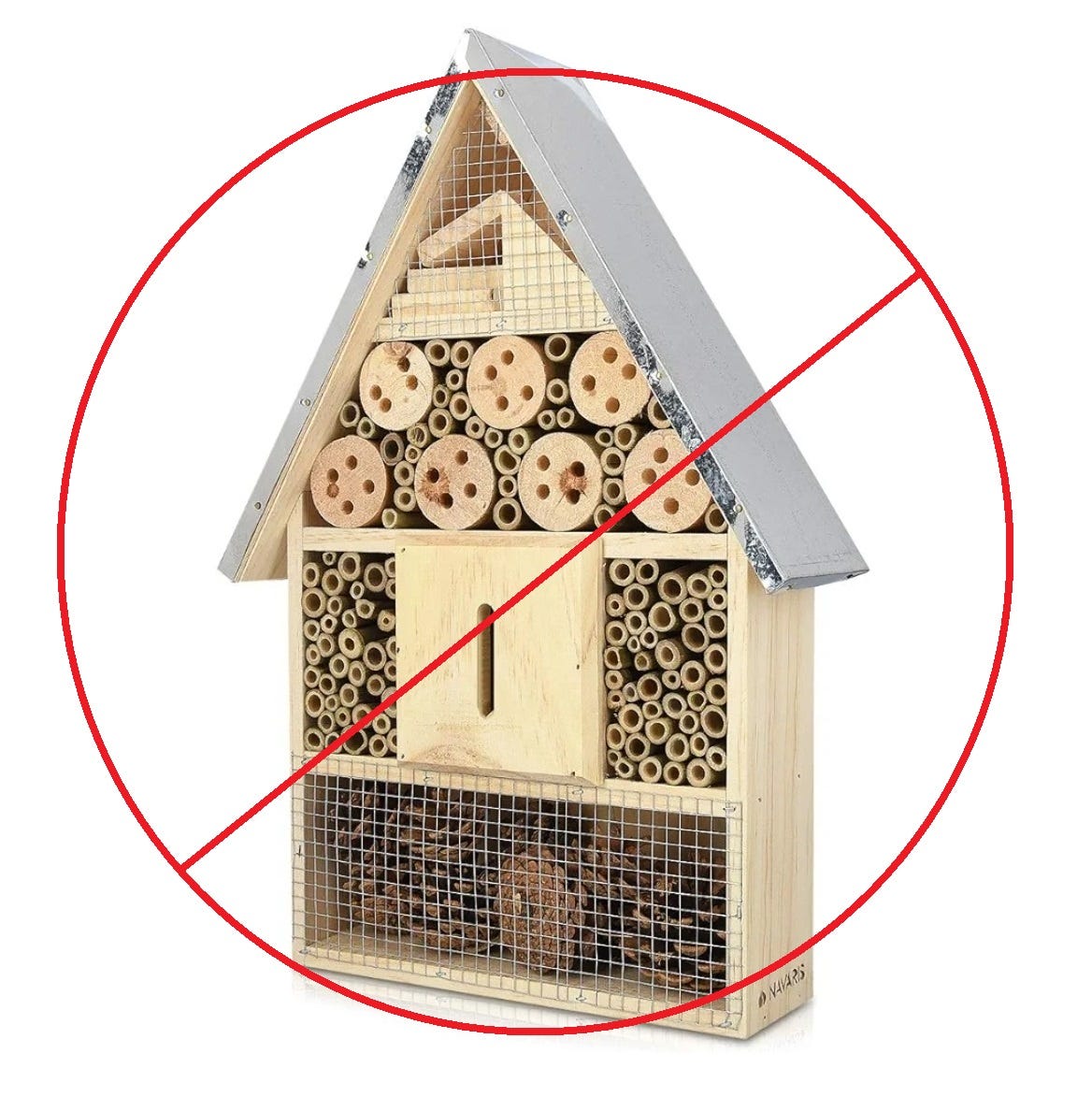
Avoid:
Pine cones - These merely add texture to the display and actually serve no purpose for bees. Over time they will rot, increasing the spread of mold and fungal disease.
Glued snail shells - Does nothing for bees; purely aesthetic.
Wood shavings - Another visually pleasing feature that is useless to bees, which will rot in the weather and spread fungal disease.
Stems and grasses - If your intention is to help bees, this is not helpful. While some insects do nest in the hollow stems of grasses, the risks posed by including such material in your hotel far exceeds the benefits.
Plastic tubes - Condensation in the tubes leads to fungal disease.
Bamboo tubes - While you can use bamboo tubes to some degree of success, I strongly advise against it. The larger tubes are too big for the majority of target insects, and they’re prone to breaking, requiring annual replacement.
No maintenance or installation guide - Careful site selection and a commitment to annual maintenance are crucial to the success of your endeavor. Any company who is selling bee or insect hotels should be providing supplemental information to their customers with each unit to ensure their success.
Embrace:
Smaller is better - While large insect “condos” have gained some popularity, they increase the risk of parasitism and fungal disease to the native bees we seek to help. Smaller hotels allow better conditions for your guests.
No paint or treated materials - These habitats should be as they are in nature─au naturale. Untreated and allowed to weather in the wild.
Blocks are okay - Drilled wooden blocks are good to use, but have a tendency to split and crack in the weather and must be replaced every 1-2 years. These are easy enough to make, however, and a good option if you’re able to make that time commitment.
Solid back - The back-end of your insect hotel should be closed in.
Able to open for cleaning - The ultimate bee-hotel should be easy to open for annual cleaning and maintenance.
Overhanging roof - A bit of overhanging roof protects tunnel entrances from sun and rain, increasing the survival chances of your insect guests.
Bee hotels should be looked at like bringing home any other new pet—a commitment the new owner is taking on. Anyone adopting the bee-hotel concept is responsible to practice due diligence to ensure these structures are designed and managed so as to minimize their negative effects. The key is in choosing the correct structural design and in providing a nurturing environment that includes annual maintenance.
Even Better Ways to Help Beneficial Insects
I can’t stress enough that insect hotels need to be a thoughtful investment and are not a set-it-and-forget-it sort of project. If you have neither the time, the money nor the inclination to come back to these habitats year after year to clean and maintain them, then I beg you to consider an alternative method of helping beneficials. It does more harm than good when we set out inadequate insect hotels left to rot.
Actually, some of the best ways we can help bees and beneficial insects is to do less─not more. A while back I wrote about Promoting Native Bees on the Farm or Homestead and those solutions translate easily to the backyard or urban landscape.
Learn more about your existing insect populations: Learn about your wild bees, native pollinators and other beneficial insects. Find out what’s available to them for food, water, nesting and overwintering habitats. This will help you recognize and protect existing habitat.
Avoid pesticides and harsh chemicals: Pesticides and chemicals affect more than just the target pest and have long-lasting consequences.
Reconsider mowing practices: If you don’t use very much of your yard, consider leaving some of it to grow wild, or convert it into a wildflower meadow. If you have a small garden, leave a corner or it wild to offer a refuge for wildlife.
Offer food & water: Plant a diversity of flowers, providing blooms over the course of the season to feed beneficial insects. Establish a puddle or water feature for thirsty visitors.
Practice tolerance! If we can learn to accept and tolerate their presence, respecting insects for the valuable service they provide, we can make a greater difference in their survival.
Why Bee Hotels are NOT the Answer
Having dedicated my life to the conservation of beneficial insects, I believe bee hotels are a lazy-man’s response to biodiversity loss. Bee hotels are NOT the answer. Honestly─it’s taking the easy way out─and it’s costing us.
Of course we want to save the bees! But what most people miss is the fact that these structures need to─first be made for bees─and secondly, they need to be religiously maintained if they are to offer any long term benefit. I cannot stress enough that this is not a set-it-and-forget-it project.
And with some 20,000 species of bees on Earth, each one different from the last, with unique characteristics and individual nesting requirements, it really does take a bit of initiative and commitment to help the bees in your backyard. You have to get to know the creatures living around you in order to know how to best help them.
Sure, you may see bees in the first year or two, but as the years pass and nature takes it’s toll, the hotel will become less and less hospitable. Maybe other insects, beetles or exotic wasps move in and you’re okay with that. You have an “insect hotel” instead of a “bee hotel” and that’s fine. But if your goal is to help bees, then you’ll have failed.
Conversely, if your ambition is to provide a habitat for wildlife on a broader range, then a set-it-and-forget-it insect hotel can serve that purpose. But again, there are better ways to help.
We need consistent and intentional action over long periods of time to have any impact on the biodiversity loss sweeping the planet.
And we need to not take the lazy-way out. #justsayin




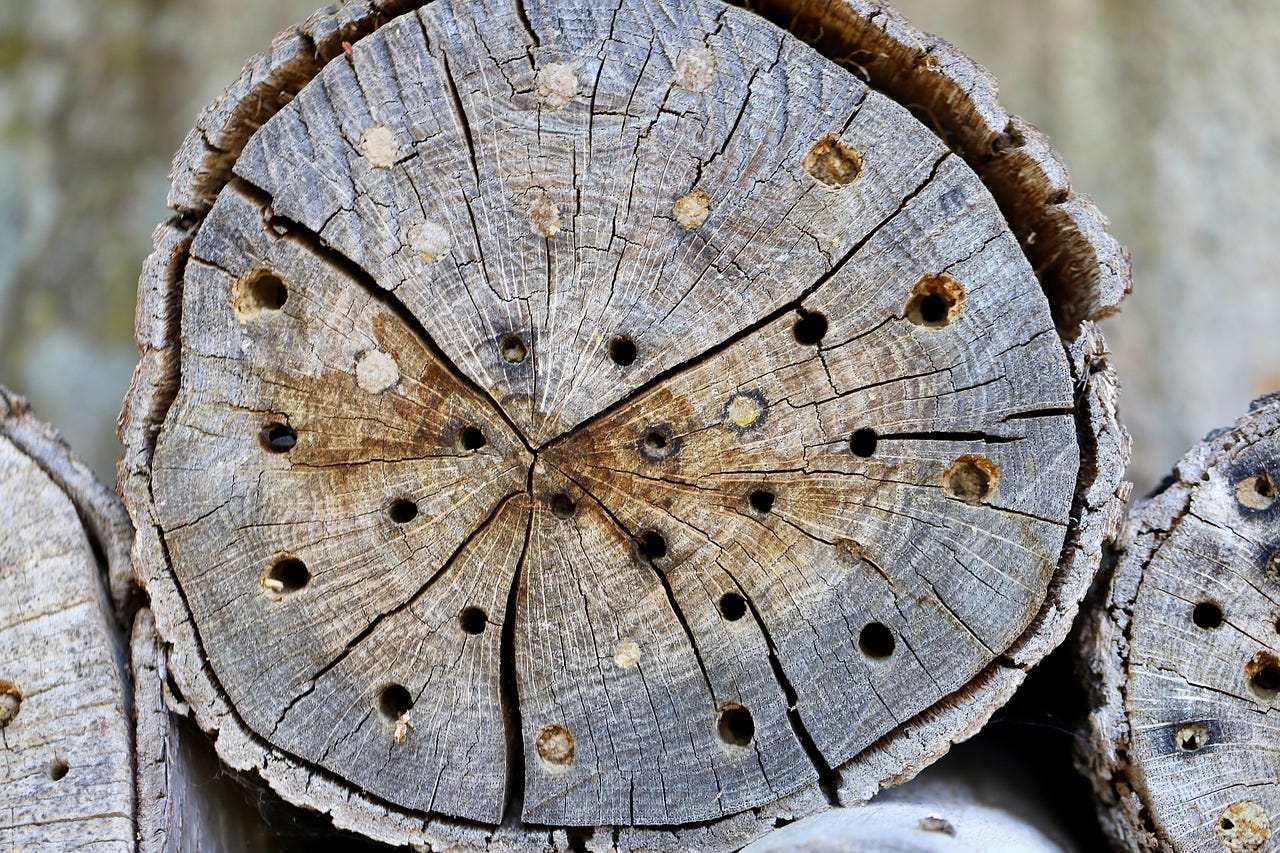
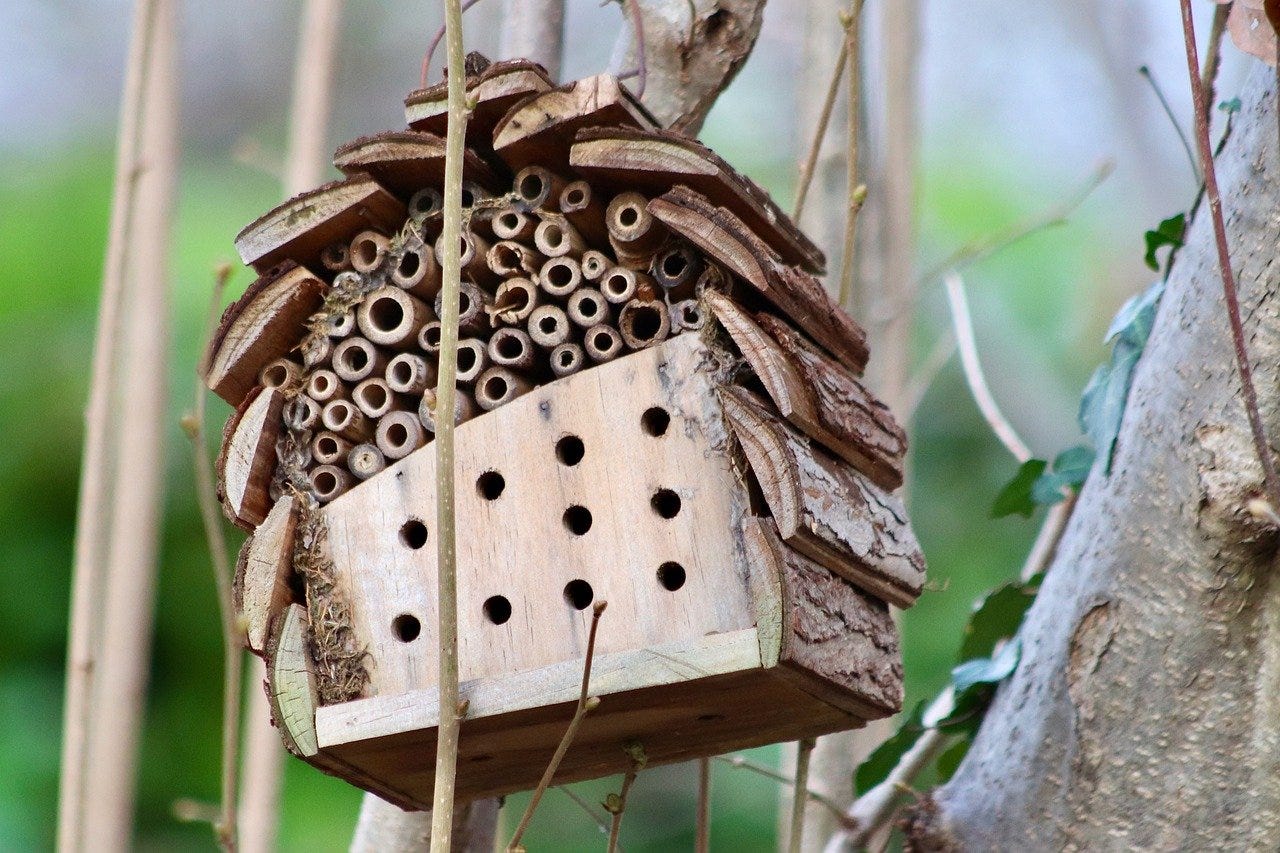
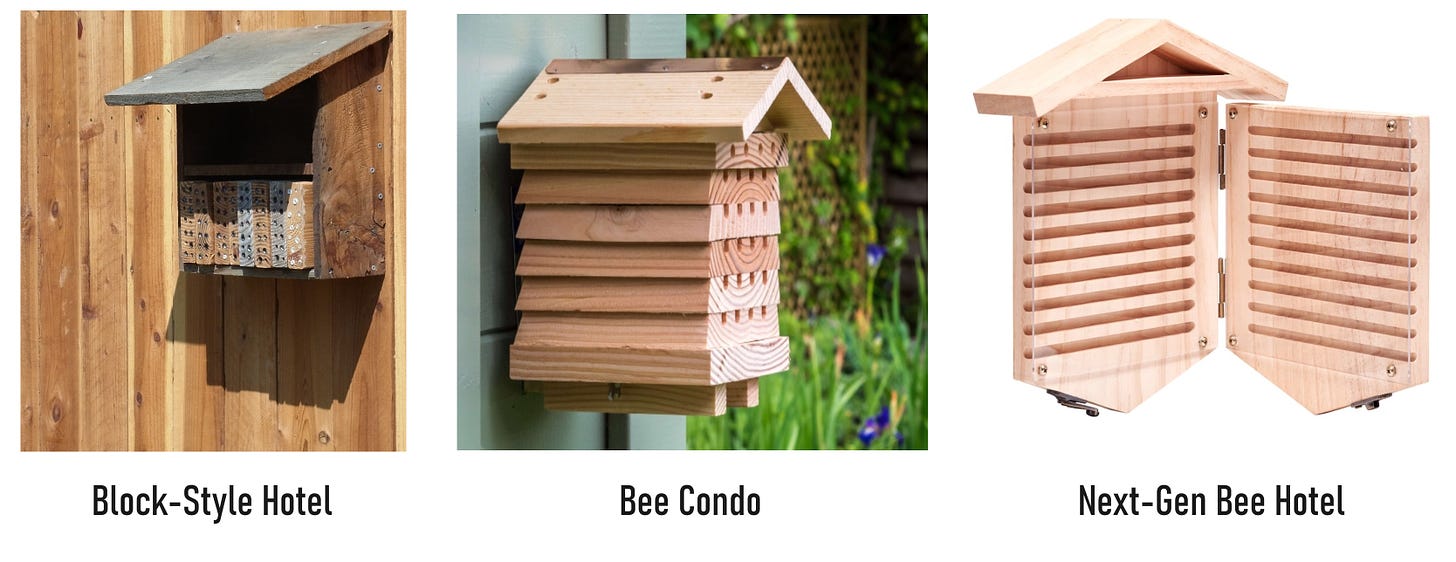
As always, Sam, I appreciate your knowledge and the time you take to share it on behalf of a wide community. No doubt you could use the time for your needs on Run-A-Muk Acres. The Bible calls that “hiding your lamp under a bushel.” Thank you ever so much.
Thank you for this informative article. I love bees and grew up with my dad keeping them. I always wondered whether a bee hotel would help or not - and now I know! I will stick to keeping a meadow patch and avoiding pesticides.